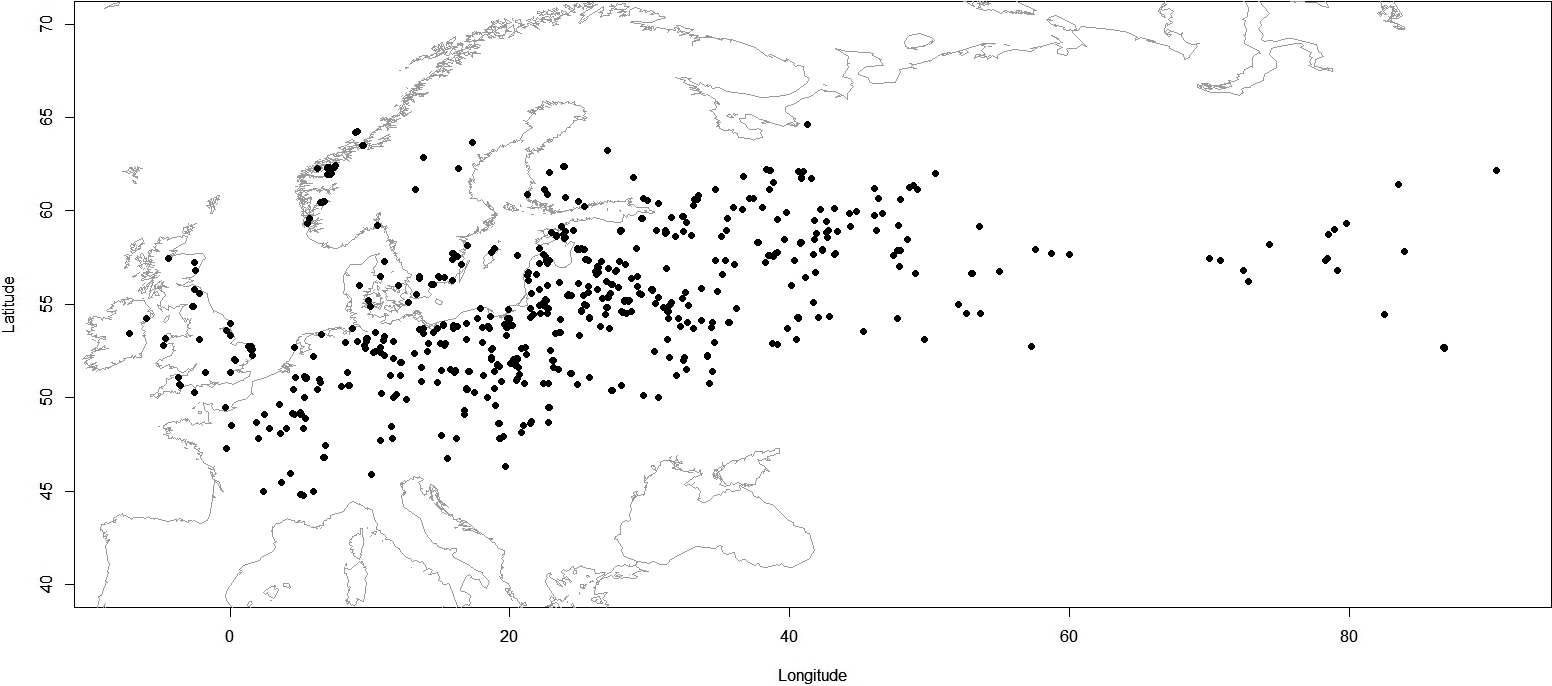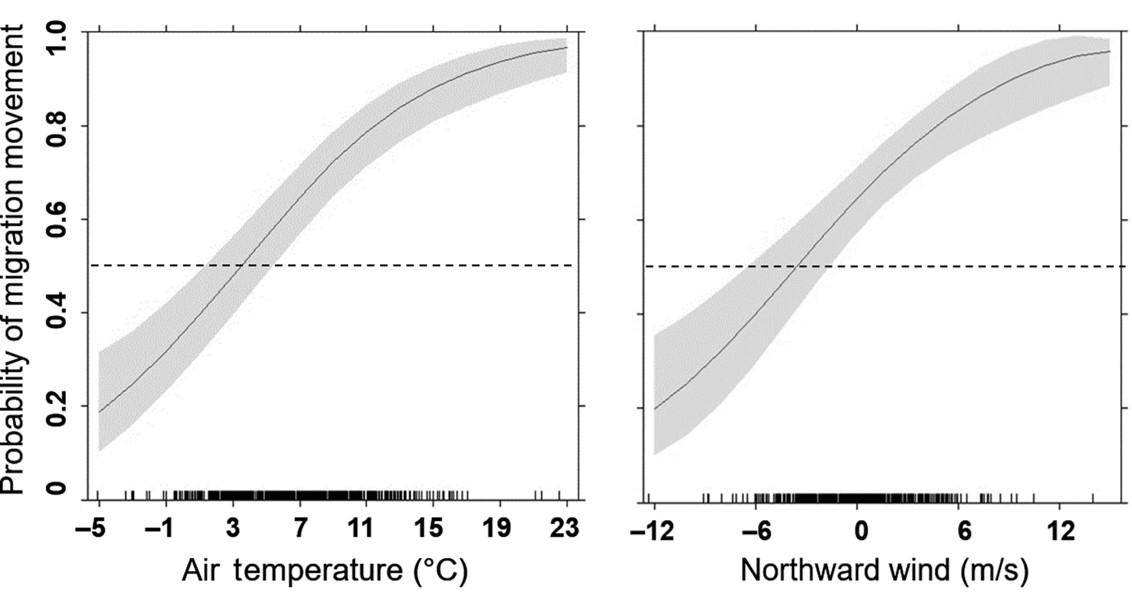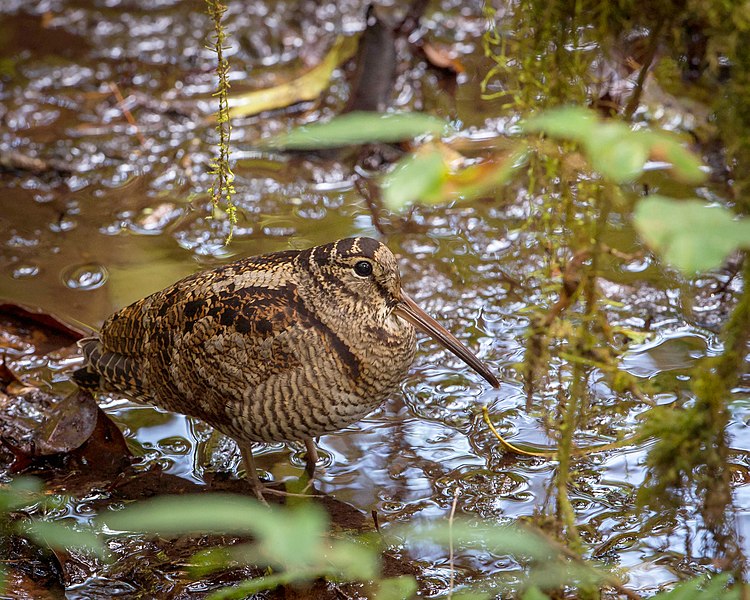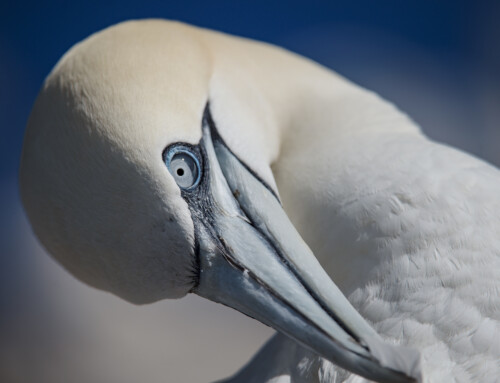LINKED PAPER
Effect of weather conditions on the spring migration of Eurasian Woodcock and consequences for breeding. Le Rest, K., Hoodless, A., Heward, C. Cazenave, J.-L. & Ferrand, Y. 2019. IBIS. DOI: 10.1111/ibi.12657. VIEW
Numerous birds species migrate to warmer regions during winter. The following spring, they return to their breeding grounds to lay eggs and raise their chicks. Some birds undertake this journey in one uninterrupted flight, while others stop on the way (Alerstam 2011). The Eurasian Woodcock (Scolopax rusticola), for example, alternates between nightly flights of several hundred kilometers and stopovers for one of several days (Crespo et al. 2016). This pattern raises a question: how do these birds decide to fly or stopover? To answer this question, a group of ornithologists tracked the spring migration of 87 Woodcocks.
The researchers caught the birds during February and March on the British Isles and in France. They then followed the Woodcocks, equipped with tiny geolocators, to their breeding grounds in central Russia. The analyses of this tracking data revealed that migration movements were influenced by three main factors: temperature, wind and atmospheric conditions.

Figure 1 Locations of tracked Woodcocks during their spring migration to Russia.
Weather
Woodcocks avoided to migrate when temperatures were below 0°C. As the temperature increased, more and more birds took to the skies. Above 11°C, about 80% of the tracked birds would be migrating. Wind also played an important role in migratory movements. Woodcocks tended to wait for northward winds, taking advantage of these tailwinds on their journey north (Liechti 2006). Interestingly, there was also an effect of eastward winds. Perhaps these winds convey information about rainy weather and atmospheric instability? And this brings us to the final factor: atmospheric conditions. In general, woodcocks migrated when the atmosphere was more stable. Possibly, these stable conditions encourage the birds to migrate because they will avoid flying into storms. More research is needed to explain the relevance of this third factor (Shamoun-Baranes et al. 2017).
 Figure 2 The probability of migration increases with air temperature and northward winds.
Figure 2 The probability of migration increases with air temperature and northward winds.
Breeding success
The researchers also evaluated the impact of migration on breeding success. Because Woodcocks are so-called income breeders (i.e. they use local resources during the breeding season), we can expect little effect of migration on breeding success (Stephens et al. 2009). And indeed, the analyses showed that breeding success strongly correlated with local climate and not with the conditions encountered during migration. Hence, the authors concluded that “although weather conditions during spring migration affect migration movements, they do not have a major influence on subsequent breeding success.”
References
Alerstam, T. 2011. Optimal bird migration revisited. Journal of Ornithology, 152: 5-23. VIEW
Crespo, A., Rodrigues, M., Telletxea, I., Ibáñez, R., Díez, F., Tobar, J. F., & Arizaga, J. 2016. No habitat selection during spring migration at a meso-scale range across mosaic landscapes: A case study with the woodcock (Scolopax rusticola). PloS One, 11: e0149790. VIEW
Liechti, F. 2006. Birds: blowin’by the wind? Journal of Ornithology, 147: 202-211. VIEW
Shamoun-Baranes, J., Liechti, F., & Vansteelant, W. M. G. 2017. Atmospheric conditions create freeways, detours and tailbacks for migrating birds. Journal of Comparative Physiology A, 203: 509-529. VIEW
Stephens, P. A., Boyd, I. L., McNamara, J. M., & Houston, A. I. 2009. Capital breeding and income breeding: their meaning, measurement, and worth. Ecology, 90: 2057-2067. VIEW
Image credits
Featured image: Eurasian Woodcock Scolopax rusticola | Jason Thompson | CC BY-SA 2.0 Flickr




